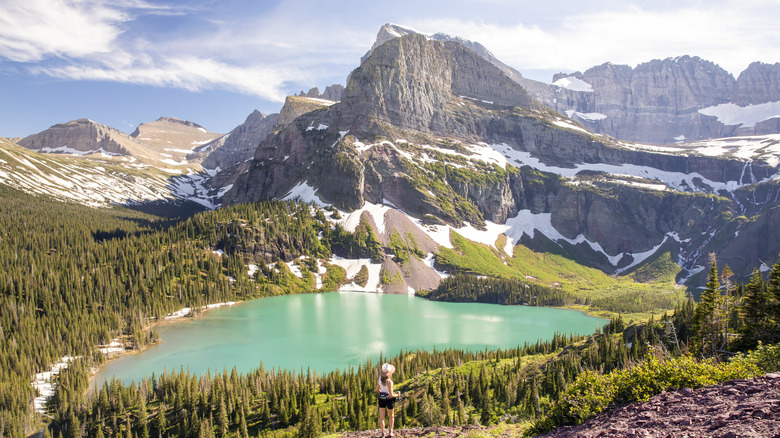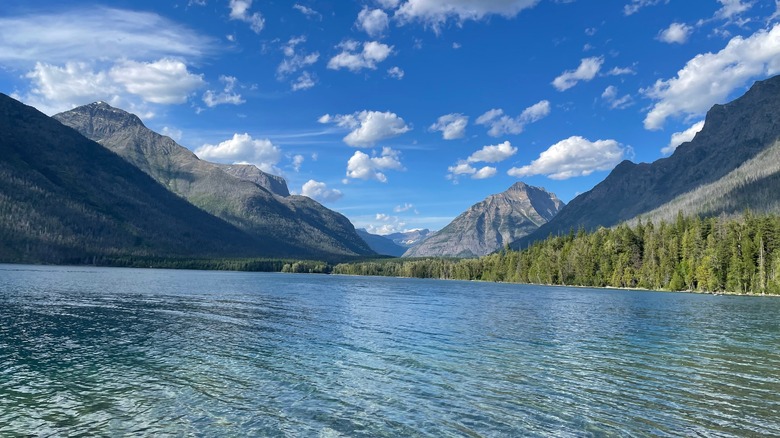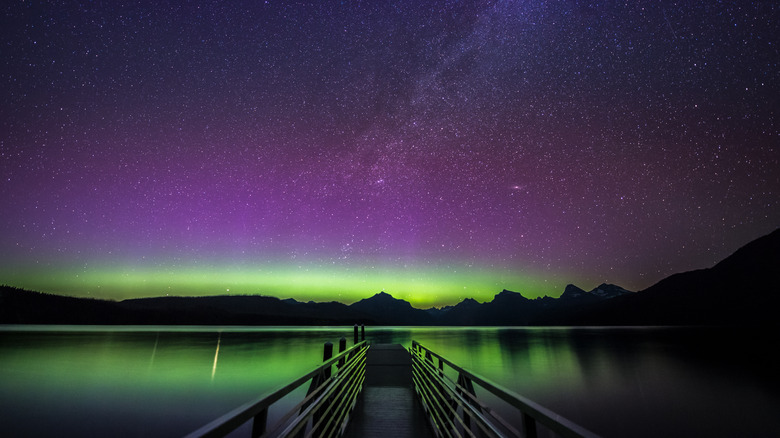The Best Time To Visit Glacier National Park Depending On What You Want From The Trip
Where Montana meets Canada, there's an uncommon border shared by two national parks. Canada's Waterton Lakes National Park sits in the north, while Glacier National Park is to the south. The latter, affectionately known as the Crown of the Continent, sees around three million explorers annually. Glacier's unique geological landscape — dating back some 1.4 billion years ago — along with nearly 1,600 square miles of protected land, 700 miles of trails, and 700 lakes, puts this park high on any outdoor adventurer's checklist. It probably doesn't hurt that Glacier National Park has gotten some well-deserved praise recently — it was ranked No. 1 on the "Best Places to Visit in the USA" by US News & World Report.
Another big draw of Glacier National Park is its widely known, 50-mile-long Going-to-the-Sun Road. The paved, two-lane road winds through the park, serving up epic mountain views, and even crosses the Continental Divide. Keen to drive the GTTS Road, hike your way up some of the park's iconic trails, or spot specific types of wildlife? You'll want to visit at certain times of the year. Sure, Glacier National Park is open all year, but based on your affinity for particular activities and sightseeing, knowing when to go is crucial to a successful Glacier getaway.
Brave the crowds for an all-around activity season
If it's your first visit to Glacier National Park, odds are you're going to want to tick some of the iconic sights and hikes off your list. There's crystal-clear Lake McDonald, the largest lake in the park, where you can go horseback riding, hop on a boat tour, or set off on two different yet stunning trails, Avalanche Lake Trail or Trail of the Cedars. Or maybe you want to conquer the iconic Grinnell Glacier hike, one of the most photographed spots in the park, accessed by a 10-mile demanding trek with a 1,600-foot elevation gain. Then there's, of course, the winding Going-to-the-Sun Road, where you can stop off at top viewpoints like Logan Pass — the highest point in the park reachable by car — admiring a host of lakes, fields, and waterfalls along the way.
All of these popular sites and activities are most accessible in the warmer months of summer, with the sweet spot being between July and September. Due to Glacier's mountainous terrain and northern location, weather can be temperamental and wet, with the possibility for mid-summer snow possible at higher elevations. It's no surprise that due to better weather and access to all of Glacier's facilities and sights, entrance fees and crowds are at their peak in summer — in July alone, around 700,000 visitors take over the park.
More serenity and unique adventures in shoulder season
When it comes to the perks of visiting Glacier National Park in shoulder season, non-existent crowds have to be at the top of the list. For example, the period between December and February brings in less than 7% of guests the month of July sees. Decreased entrance fees and a chance to catch a glimpse of the northern lights are also big pluses.
Activities will vary, depending on whether you're exploring in early spring, end of fall, or winter. Bikers get early access to the GTTS Road from mid-May to early June, well before cars (though conditions are weather-dependent). Consider yourself an intrepid whitewater rafter? Take advantage of the park's rivers at their highest in spring, especially the Middle Fork of the Flathead River.
In the fall season, many of the Glacier's animals, like black and grizzly bears, begin preparing for winter and are potentially easier to spot without throngs of people. However, in the dead of Montana's harsh winter, facilities, trails, and roads are often partially closed or completely inaccessible. But if you're a meticulous planner and no stranger to winter expeditions, you'll surely revel in snowshoeing across a virtually untouched winter wonderland.


